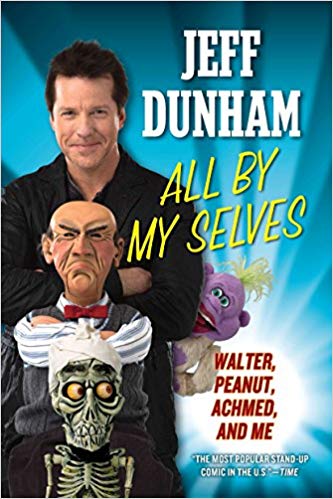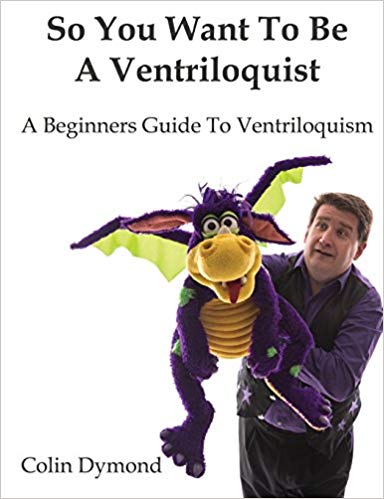
The Multi Faceted David Weyrick!
That fellow performing in a tuxedo (honoring Jimmy Nelson) is our own David Weyrick. David keeps his act relevant and family friendly. From the grieving goat Folkmanis, to the elderly and deaf Clyde, to the Library show on the history of puppetry, David blends education and fun.
A very young David received his first puppet at age four and by age eight had his own cardboard theater and a cast of puppet characters.

David (right – holding Mickey Mouse puppet) with his brothers – 1958
At age 10, he saw Vonda KayVan Dyke perform with Kurley Q. in the Miss America Pagent. Learning the word Ventriloquist for the first time, David fell in love with the craft. He still owns his first dummy, Joey!

David still owns and uses his first dummy, Joey.
David’s education in ventriloquism is broad: from Paul Winchell’s book, to Jimmy Nelson’s record, to a workshop by Gene Cordova at the 1990 One Way Street Puppet Festival, to the 2012 ConVENTion, and then on to the IVS and the Maher Interactive Course where he received one-on-one coaching from Ken Groves, Tom Crowl, and Mark Wade.

David with Ken Groves

Rounding out his skills, David worked on his use of arm rods with Dan Horn to bring greater life to his puppet Critter, a creation of Mary Ann Taylor. In 2015, David won second place in the Senior Open Mic People’s Choice at the ConVENTion.
David retired from full time ministry and now does shows for children, seniors, grief counseling, and the history of puppets. His various acts include stories about Critter’s home in Tennetucky and songs honoring Paul Winchell (We All Scream for Ice Cream) and Vonda Kay Van Dyke (Together Wherever We Go).

David is active in Scouting and serves as a summer chaplain using puppets at vespers and can be found in our own IVS Spotlight in his column, MORE THINGS I FIGURED OUT.

David Weyrick can be contacted at ventrildavid@gmail.com











 When the brain has linked the sound, the illusion is complete. But there are tricks involved to make this happen.
When the brain has linked the sound, the illusion is complete. But there are tricks involved to make this happen.


 V – How are you today.
V – How are you today.





 Think of knowledge as a water hose. Drink from it often and your thirst will be quenched. Only drink enough that your throat is wet and you will find out you begin to get parched again.
Think of knowledge as a water hose. Drink from it often and your thirst will be quenched. Only drink enough that your throat is wet and you will find out you begin to get parched again. When Lester was alive, video and audio were not really options. Today there are DVD’s and online courses available. Again, I recommend them all and will try to list them later.
When Lester was alive, video and audio were not really options. Today there are DVD’s and online courses available. Again, I recommend them all and will try to list them later.













Recent Comments